Illuminating the future
Trained as solar engineers, these women are bringing power and light to their villages in rural Belize
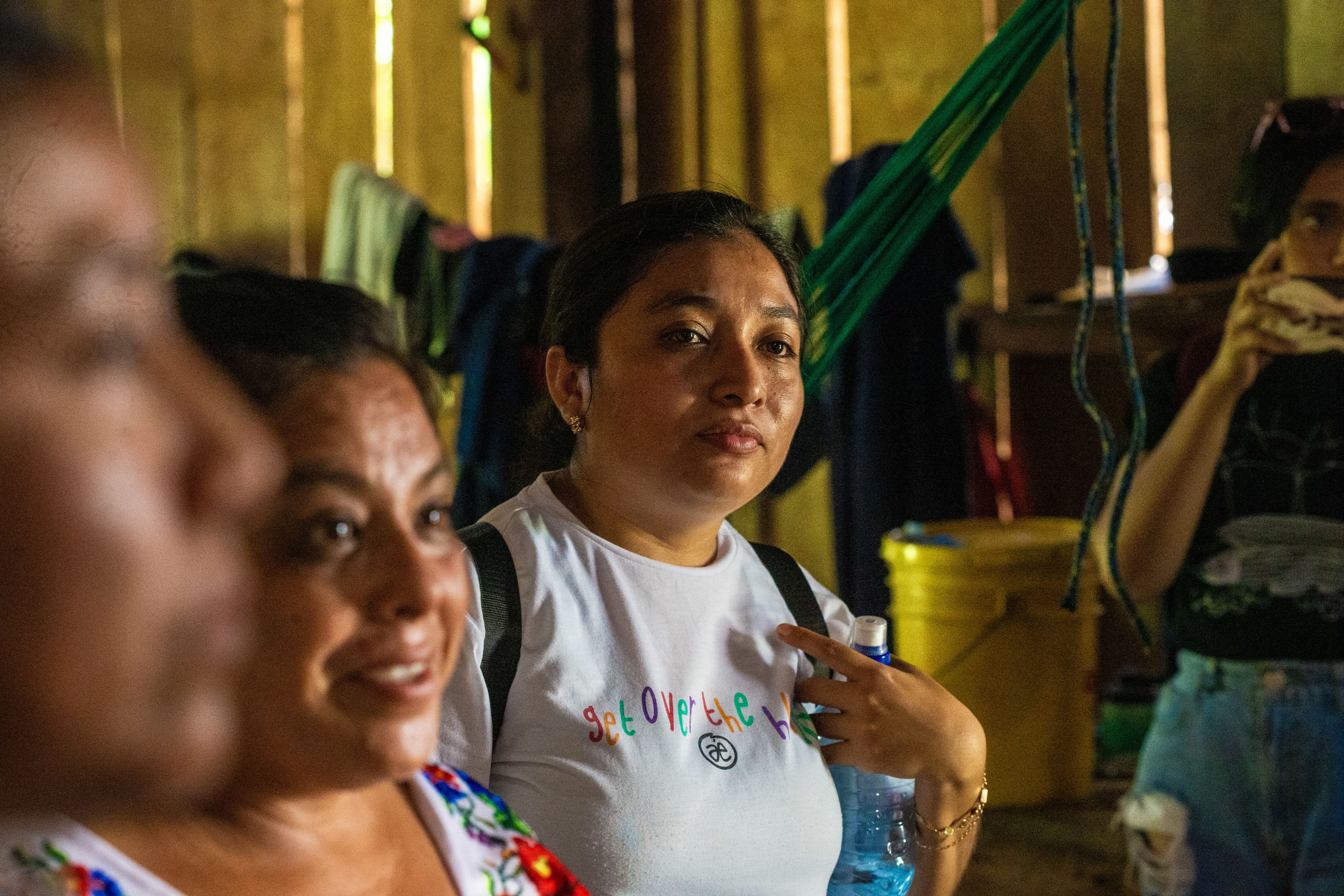
Toledo is Belize’s southernmost and least populated district.
In this remote region covered by rainforest rich in biodiversity, most of the population still speaks native Mayan languages.
The local economy revolves around subsistence agriculture and many residents work as farmers.
Up until a decade ago, Florentina Choco was one of them.
Florentina lived in Santa Teresa, a small rural village with no electricity, like many others in Toledo.
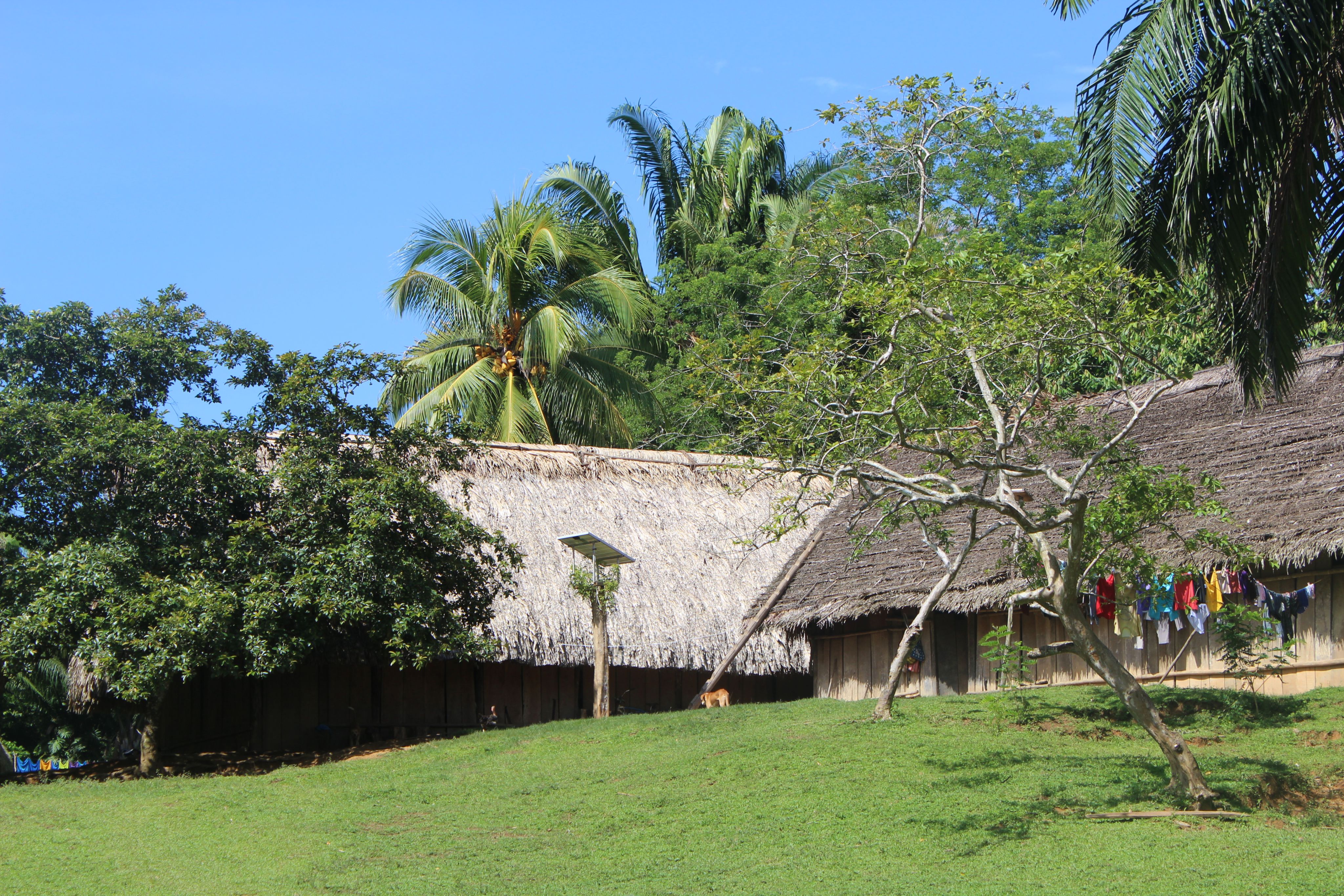
Santa Teresa, Belize.

Santa Teresa, Belize.
Santa Teresa, Belize.
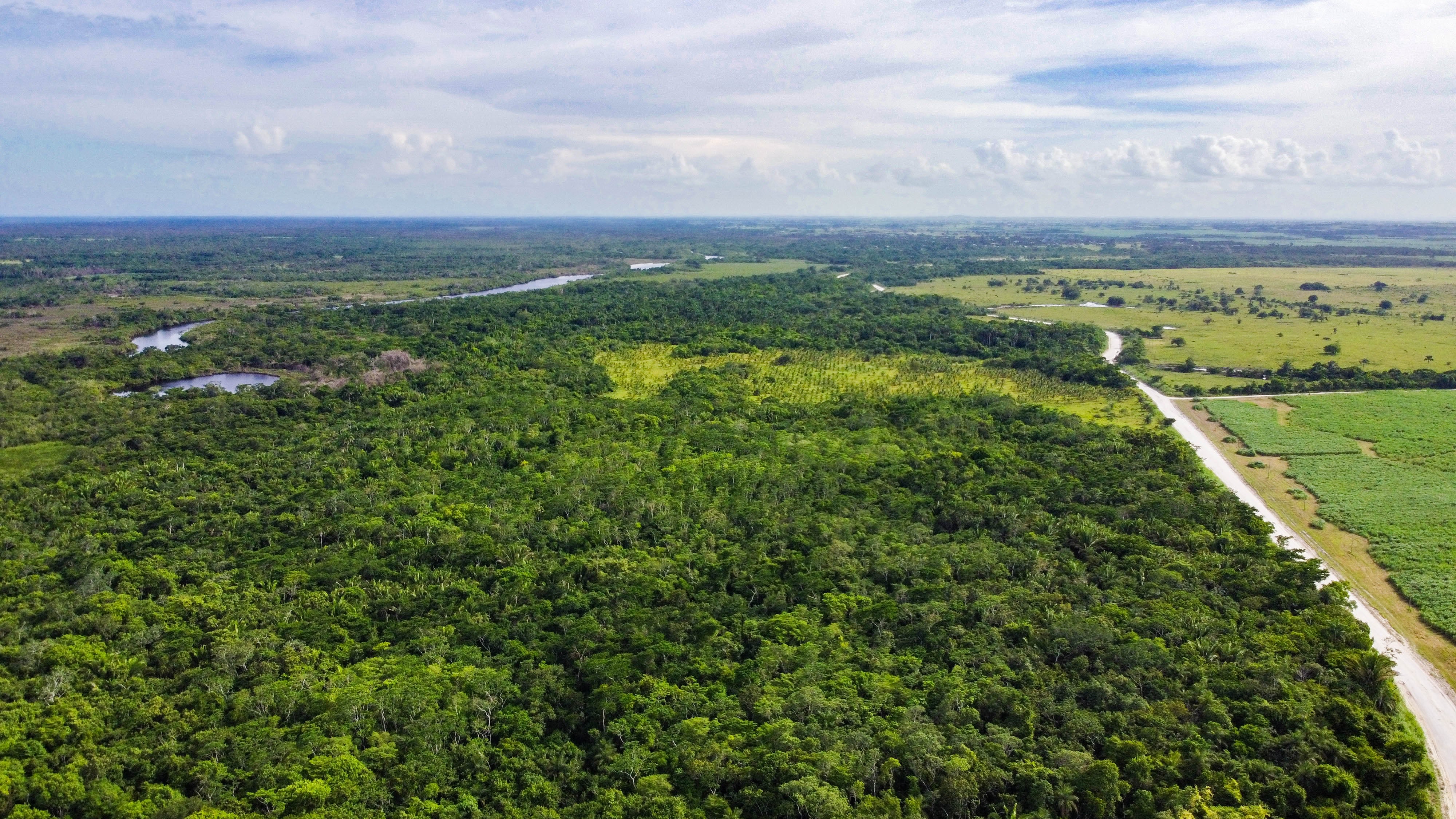
Southern Belize. Photo: Javier Rejon/Unsplash
Southern Belize. Photo: Javier Rejon/Unsplash
Do not go gentle into that good night
At night, only the dim lights of candles and homemade kerosene lamps illuminated the households, producing harmful fumes and posing a fire hazard.
It was hard for adults to work and for children to study in the dark, and the community had no way of using electronic devices or any kind of electric appliances, like refrigerators to conserve food.

Against the dying of the light
Ten years later, Santa Teresa’s dark nights are a distant memory thanks to Florentina, who now lives in the town of Punta Gorda, where she is building a career as a solar power engineer and studying to earn her high school diploma.
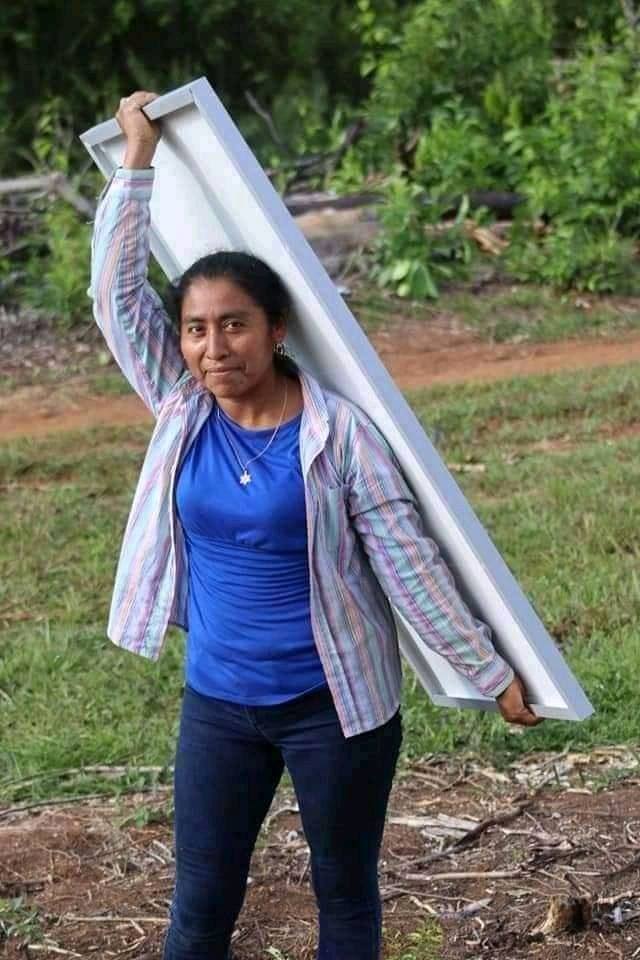
Installing solar panels in the village of Machakil Ha. Photo: @carlos_andoni
“I feel very proud of myself because I helped my community.”
Life in Santa Teresa began to change in 2013, when the non-profit Plenty Belize offered the community an opportunity to send two local women to India, where they would learn how to install, maintain, and repair small household solar power systems.
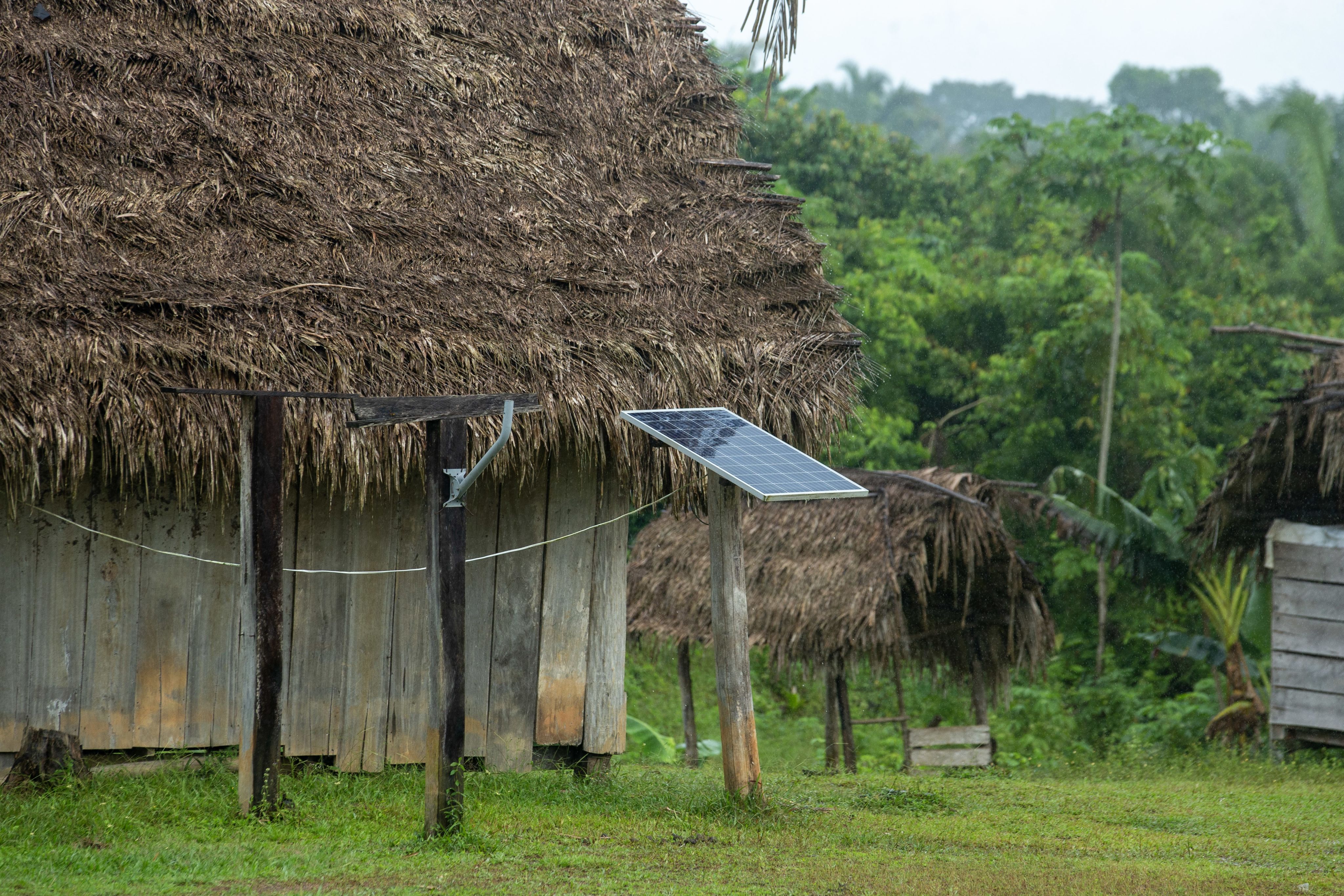
Solar panel installed in Graham Creek, Belize. Photo: Leonel Requena-UNDP GEF SG

Installing solar panels in the village of Machakil Ha. Photo: @carlos_andoni
Installing solar panels in the village of Machakil Ha. Photo: @carlos_andoni

Solar panel installed in Graham Creek, Belize. Photo: Leonel Requena-UNDP GEF SG
Solar panel installed in Graham Creek, Belize. Photo: Leonel Requena-UNDP GEF SG
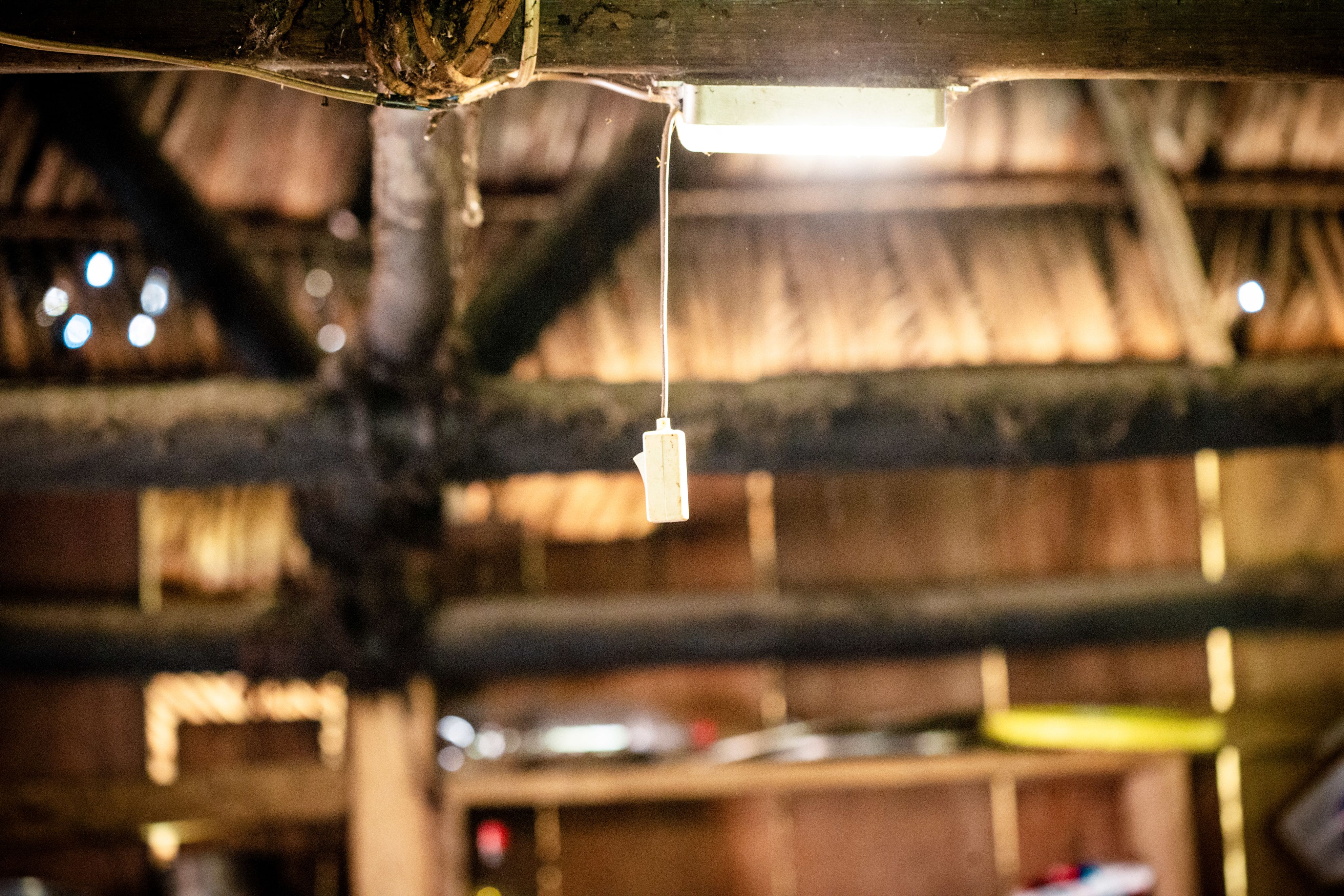
Solar light in a home in Machakil Ha, Belize. Photo: Mark Miller/Plenty Belize-UNDP GEF SGP
Solar light in a home in Machakil Ha, Belize. Photo: Mark Miller/Plenty Belize-UNDP GEF SGP
A shining light
“On that day, the village chairman selected me and another lady, but she dropped off”, Florentina recalls. She felt scared and nervous because she had never travelled to another country, but her son encouraged her to go and learn. When Florentina got the final call, she said: “It’s ok, I can go”.
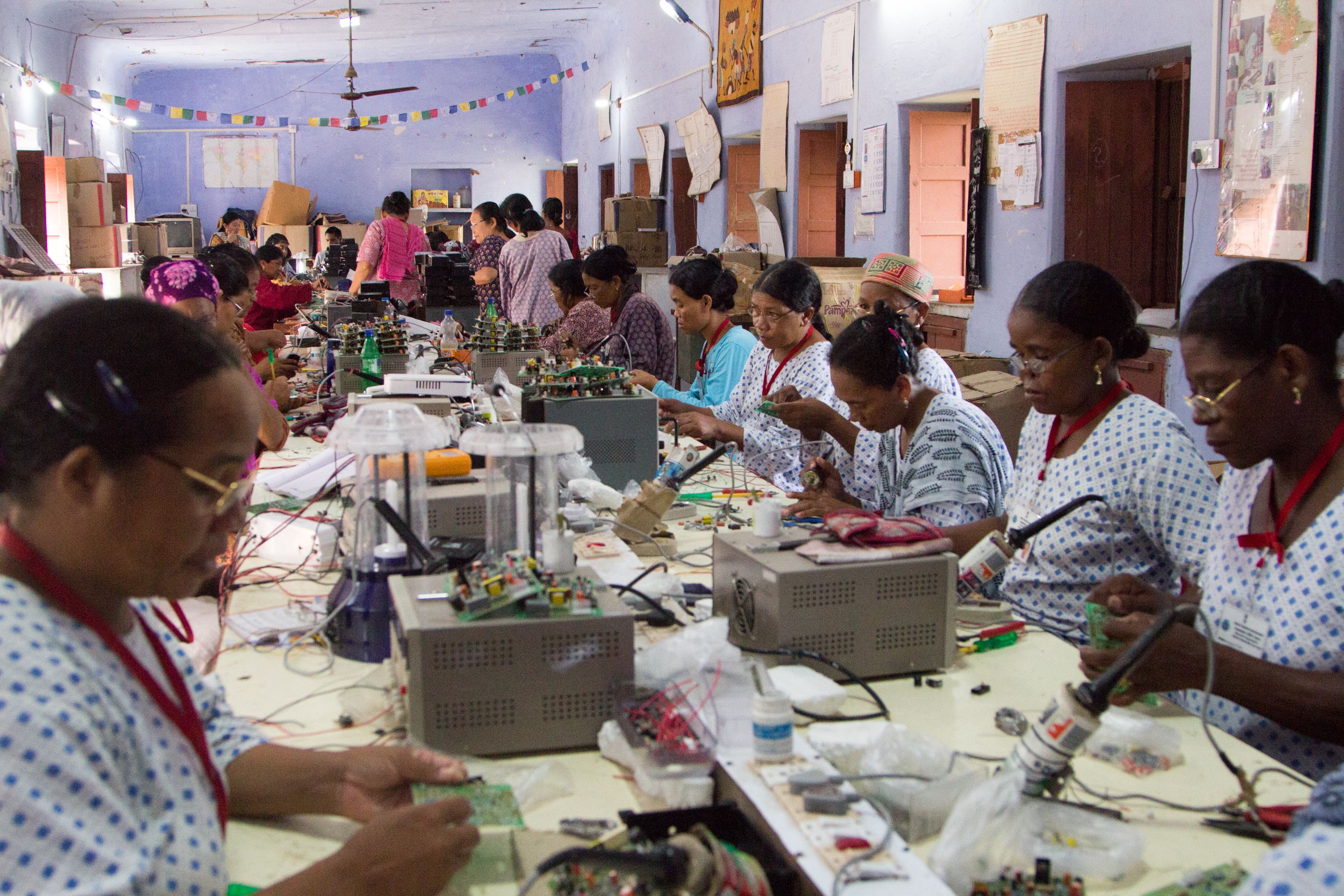
Barefoot College meeting in India. Photo: Barefoot College
Though she would have to travel solo, Florentina made the hard decision of leaving her family behind for six months and made her way to the other side of the world to learn about something that was completely new to her:
“I never gave up because I wanted to help my community. I wanted to help the school children have light at home to do their homework. My aim was to complete my training and come home with my skills”.
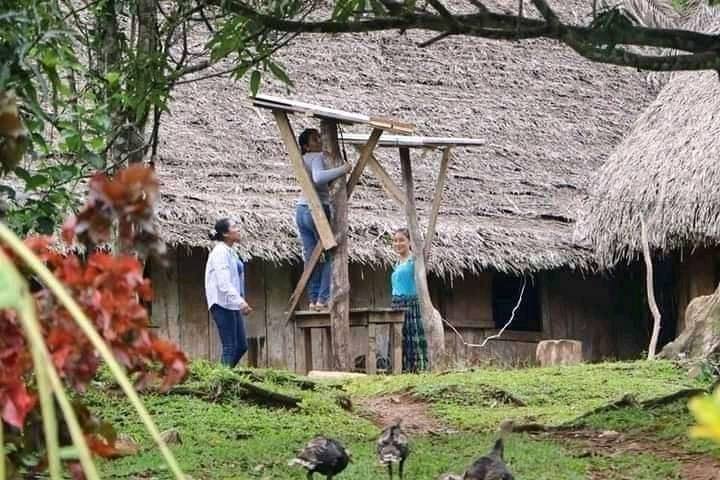
Installing solar panels in her home village of Santa Teresa. Photo: @carlos_andoni
Her hard work paid off; after nearly two years waiting for all the materials needed, Florentina was finally able to provide 68 households in her community with 100 watts and 40 watts solar systems, as well as solar-powered lanterns, directly benefitting nearly 400 villagers.

Barefoot College meeting in India. Photo: Barefoot College
Barefoot College meeting in India. Photo: Barefoot College

Installing solar panels in her home village of Santa Teresa. Photo: @carlos_andoni
Installing solar panels in her home village of Santa Teresa. Photo: @carlos_andoni
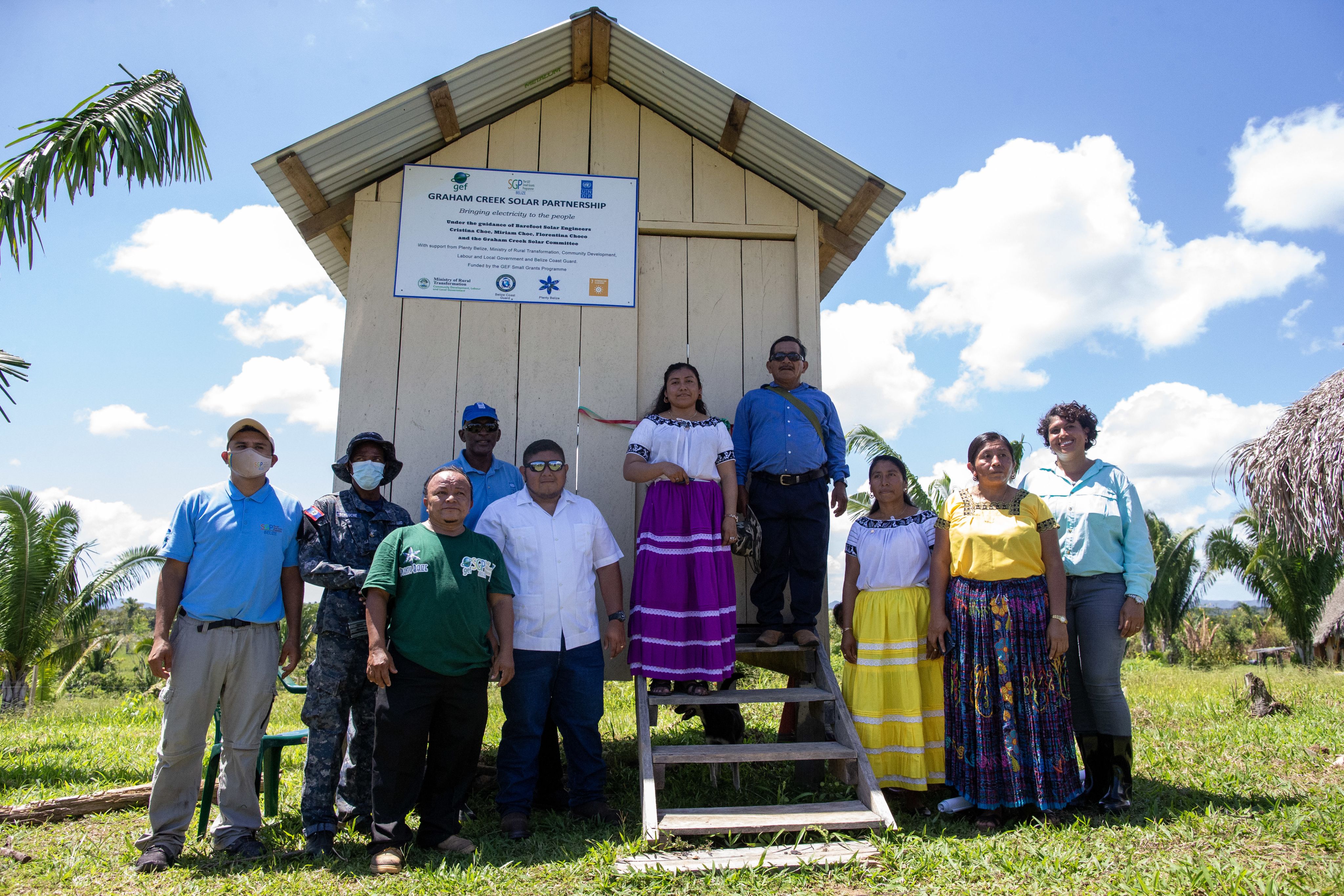
Graham Creek inauguration. Photo: Mark Miller/Plenty Belize-UNDP GEF SGP
Graham Creek inauguration. Photo: Mark Miller/Plenty Belize-UNDP GEF SGP
Solar mamas
Florentina is one of over 3,500 rural women from 93 countries who have become ‘Solar Mamas’ after training at Barefoot College International in Rajasthan, India.
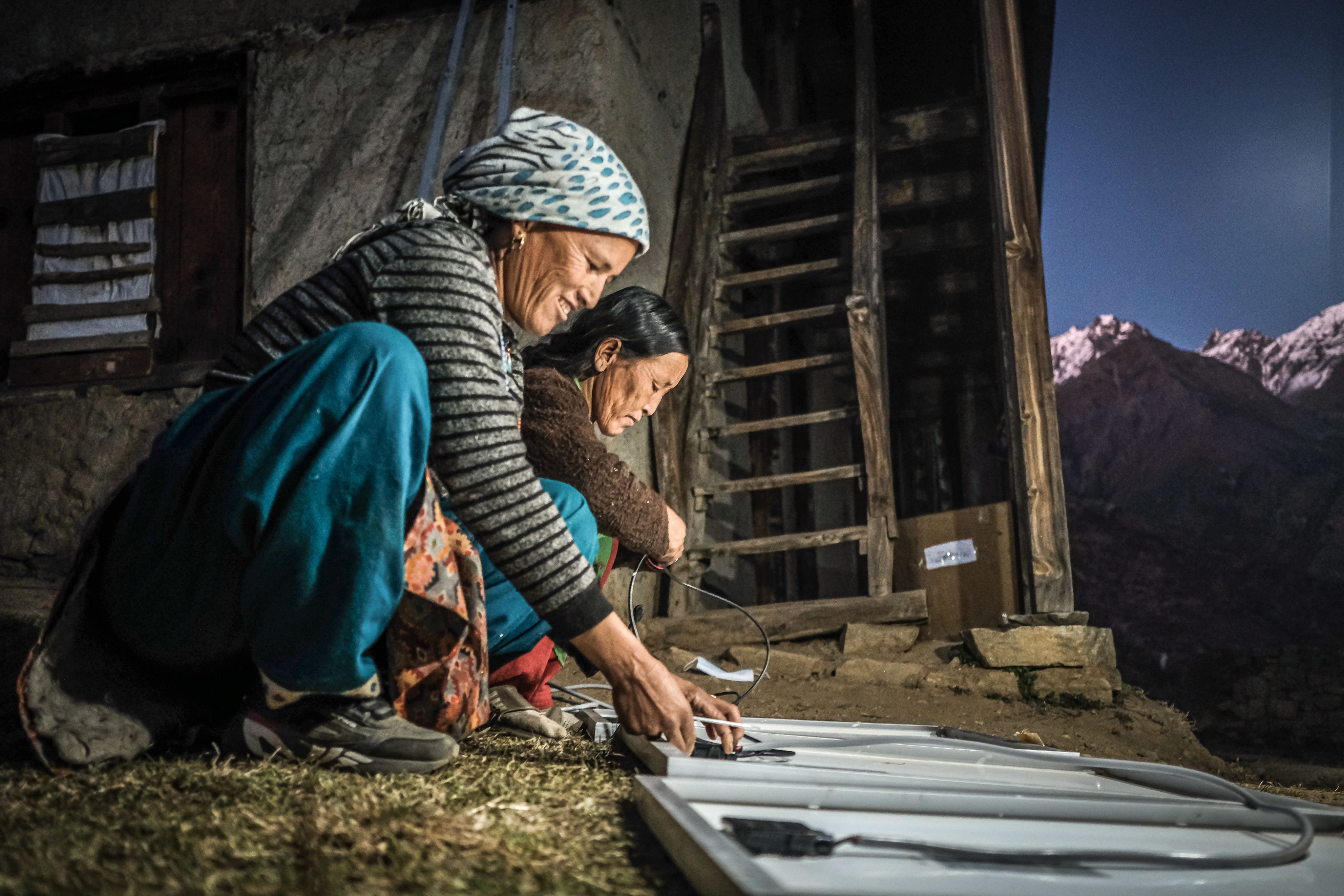
Another solar mama, Laiku Lama (L), installing solar panels in Humla, Nepal. Photo: UNDP Nepal
The Solar Mamas have gone on to install 175,000 solar systems in villages around the world and share what they’ve learned with their local communities. This South-South cooperation programme not only trains students to become solar technicians, but also teaches them about women’s rights, health and safety, environmental stewardship, English language skills, and tech literacy.
Since rural women are frequently illiterate – compounded by language barriers - the programme utilizes visual learning tools and focuses on practical demonstrations and hands-on learning experiences.
The small solar systems that Solar Mamas learn to install and maintain are crucial for the socio-economic development of their communities. Not only do they help combat climate change by replacing carbon-emitting candles and kerosene lamps with a clean and renewable energy source, these systems also protect the health of villagers who no longer have to inhale hazardous smoke and fumes.
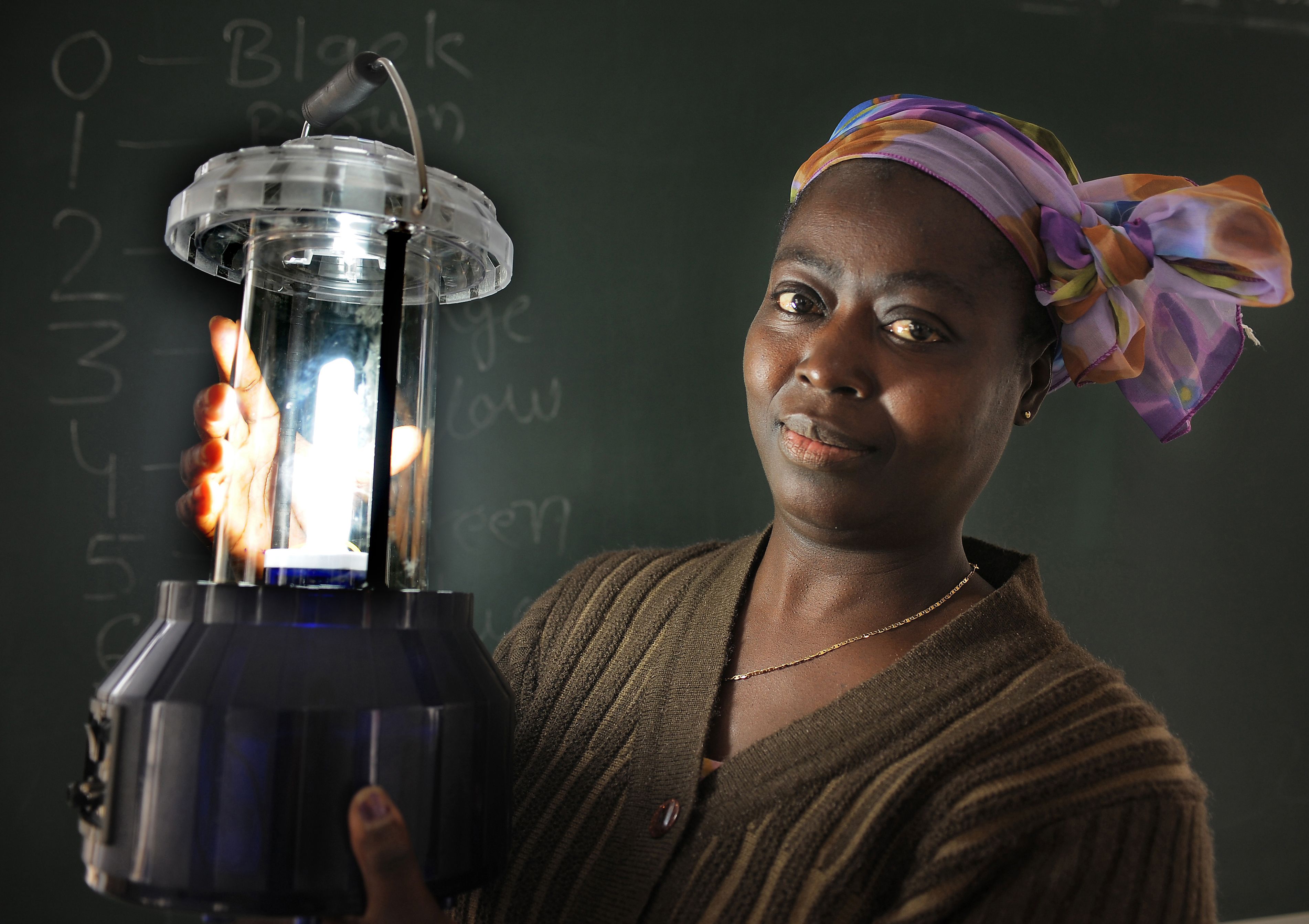
Akouavi, another solar mama from the remote village of Agome Sevah in Togo. Photo: Lar Boland/Barefoot College International
With photovoltaic electricity, children can study at night and their academic performance improves, while adults can use electronic devices and appliances to enhance their livelihoods.

Another solar mama, Laiku Lama (L), installing solar panels in Humla, Nepal. Photo: UNDP Nepal
Another solar mama, Laiku Lama (L), installing solar panels in Humla, Nepal. Photo: UNDP Nepal

Akouavi, another solar mama from the remote village of Agome Sevah in Togo. Photo: Lar Boland/Barefoot College International
Akouavi, another solar mama from the remote village of Agome Sevah in Togo. Photo: Lar Boland/Barefoot College International
Three women, triple the power
Following in the footsteps of Florentina, Miriam Choc and her sister Cristina went to India in 2017 to become Solar Mamas. The two are from another rural community in Toledo district - Santa Elena - which also had no access to electricity.
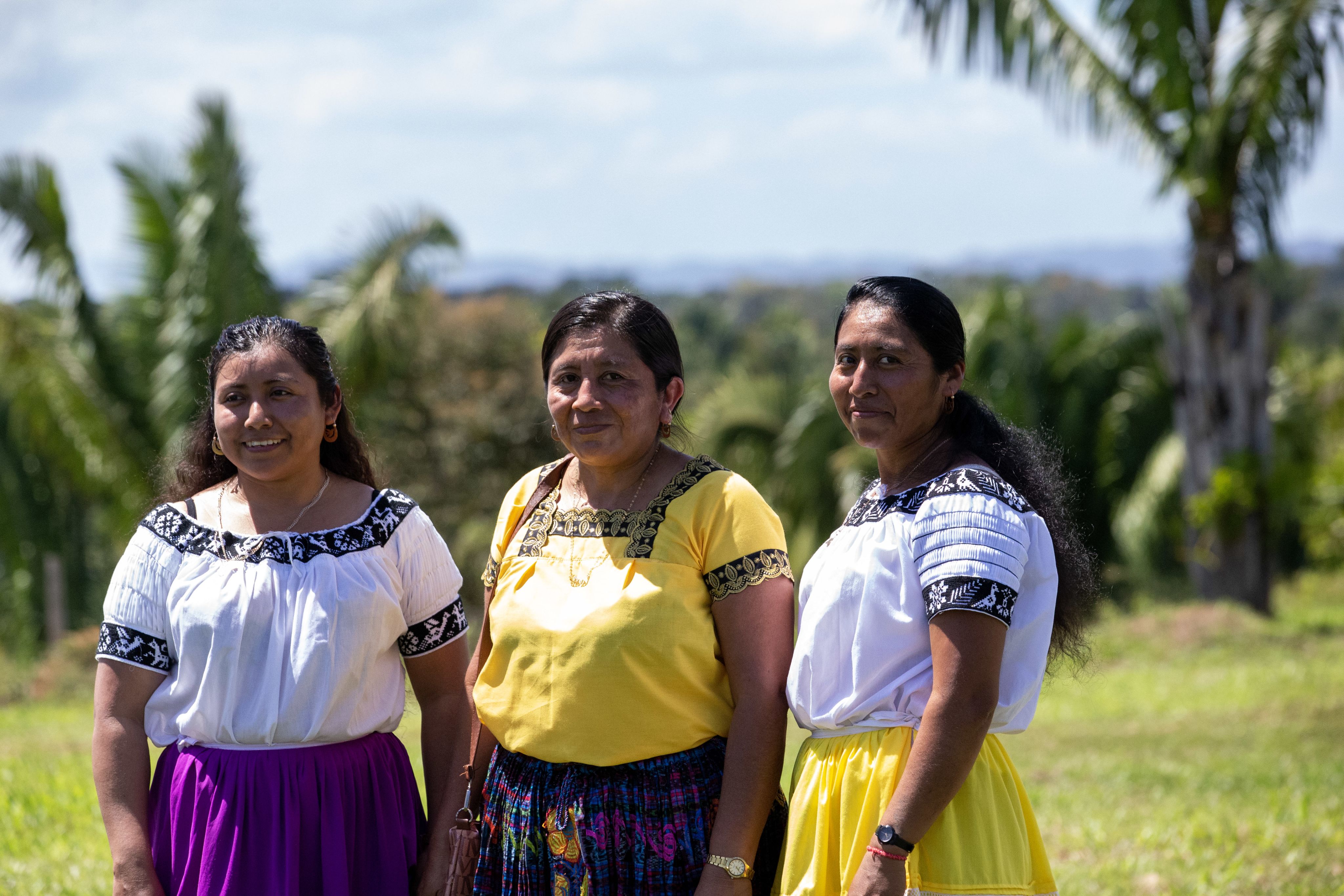
Florentina Choco (center), and sisters, Miriam and Cristina Choc, three Indigenous women who studied engineering at Barefoot College, India, brought solar energy to the most remote villages in the Toledo District, Belize. Photo: Mark Miller/Plenty Belize-UNDP GEF SGP
“On the first night after we installed the solar systems, the families were very excited, they were so happy, and you could see the lights in their houses. It was so bright, compared to before. It was beautiful.”
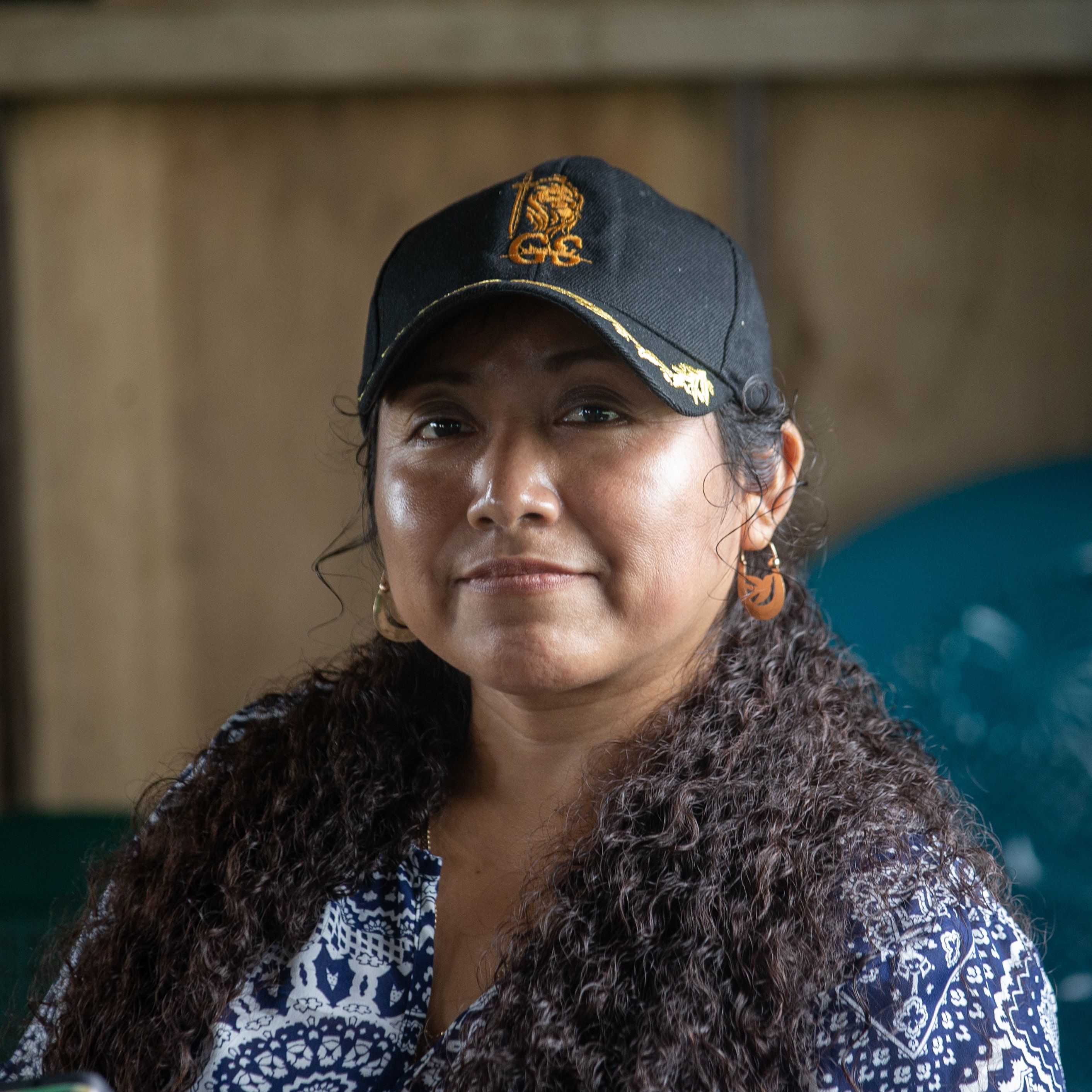
Miriam Choc. Photo: Mark Miller/Plenty Belize-UNDP GEF SGP
But bringing light to their own communities was not enough for the Solar Mamas of Belize.
“Afterwards, we sat down with Plenty Belize and talked about what we wanted to do next”, said Miriam. “For me, what I learned in India is not enough, learning doesn't stop. Even though we face challenges and obstacles in life, I overcome them, you just have to believe in yourself”.
That’s when Miriam and her sister Cristina joined Florentina to form their own company, Belize Power Connect Limited, which has become the central hub for solar electricity system parts, supplies, tools, training and technical expertise in Toledo district.
After completing further photovoltaic courses facilitated by Solar Energy International to learn to design and install larger residential and commercial-scale electrical systems, the solar engineers travelled to two of Belize’s most remote villages, Machakil Ha and Graham Creek.
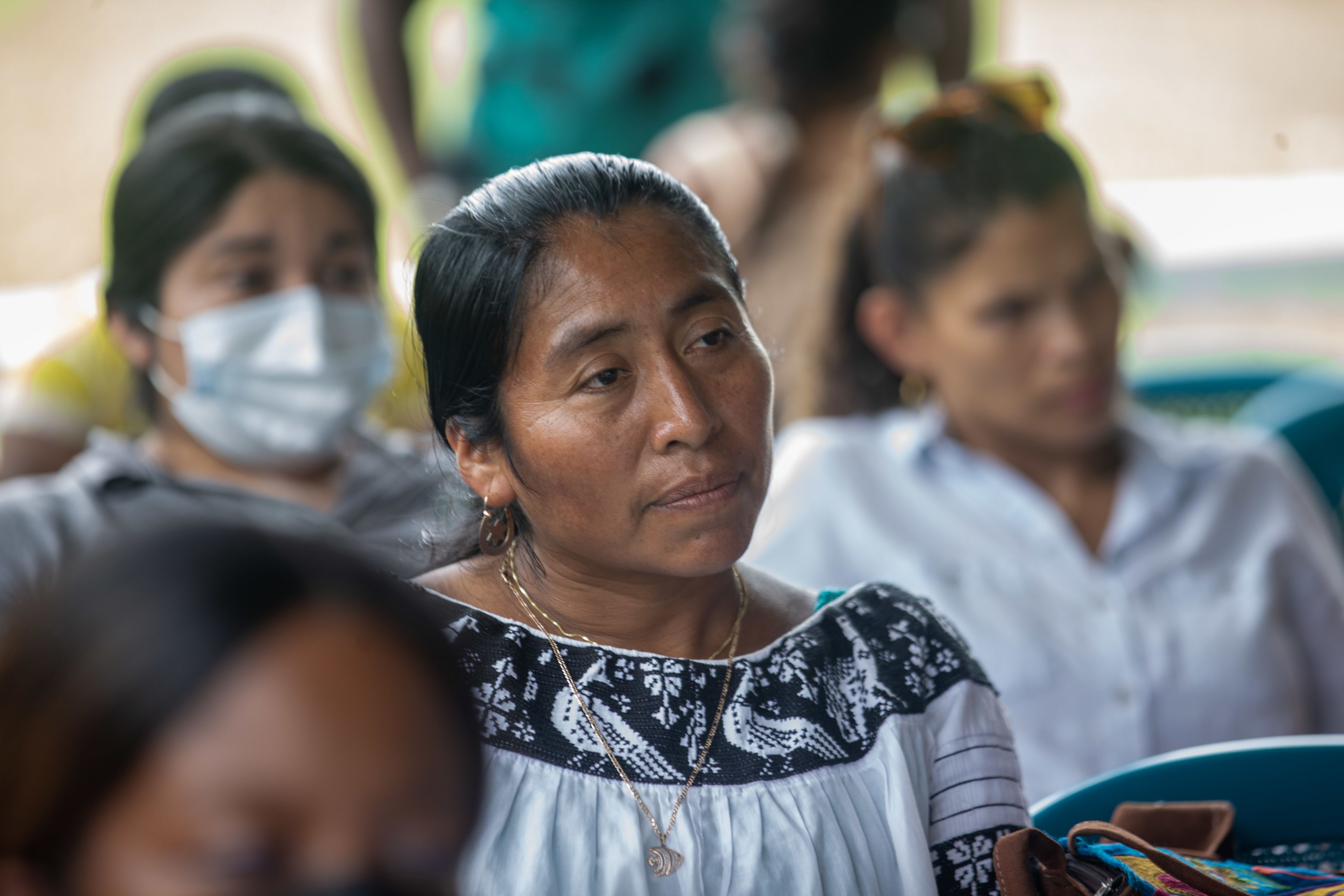
Cristina Choc at the Machakil Ha inauguration in the Toledo District, Belize. Photo: Mark Miller/Plenty Belize-UNDP GEF SGP
Despite many challenges, including the COVID-19 pandemic and a muddy seven-hour hike through the jungle just to reach Graham Creek, by 2022 the solar engineers had installed solar power systems in the households of each of the 280 people living in the two communities. Two primary schools in both communities also received solar systems, and a solar water system was also installed in Machakil Ha.
“I am proud of myself because I know I'm doing something good that will benefit people and children. Especially in my country, women aren't allowed to leave their families, if you have a husband you have to commit, that’s how it is in my culture. But I just managed it, and we did it”, Miriam exulted.
Like Florentina, she has also moved to Punta Gorda and is studying to earn her high school diploma:
“Before I went to India, I was just a housewife, I made crafts, I raised chicken, and now I am working with solar. I am more focused at work, I am willing to go to other communities, I want to learn, and we have our new company. As the vice-chairlady, I was nervous, but I said to myself: ‘I can do it’. Nothing is impossible, we just need to help each other.”

Florentina Choco (center), and sisters, Miriam and Cristina Choc, three Indigenous women who studied engineering at Barefoot College, India, brought solar energy to the most remote villages in the Toledo District, Belize. Photo: Mark Miller/Plenty Belize-UNDP GEF SGP
Florentina Choco (center), and sisters, Miriam and Cristina Choc, three Indigenous women who studied engineering at Barefoot College, India, brought solar energy to the most remote villages in the Toledo District, Belize. Photo: Mark Miller/Plenty Belize-UNDP GEF SGP

Miriam Choc. Photo: Mark Miller/Plenty Belize-UNDP GEF SGP
Miriam Choc. Photo: Mark Miller/Plenty Belize-UNDP GEF SGP

Cristina Choc at the Machakil Ha inauguration in the Toledo District, Belize. Photo: Mark Miller/Plenty Belize-UNDP GEF SGP
Cristina Choc at the Machakil Ha inauguration in the Toledo District, Belize. Photo: Mark Miller/Plenty Belize-UNDP GEF SGP
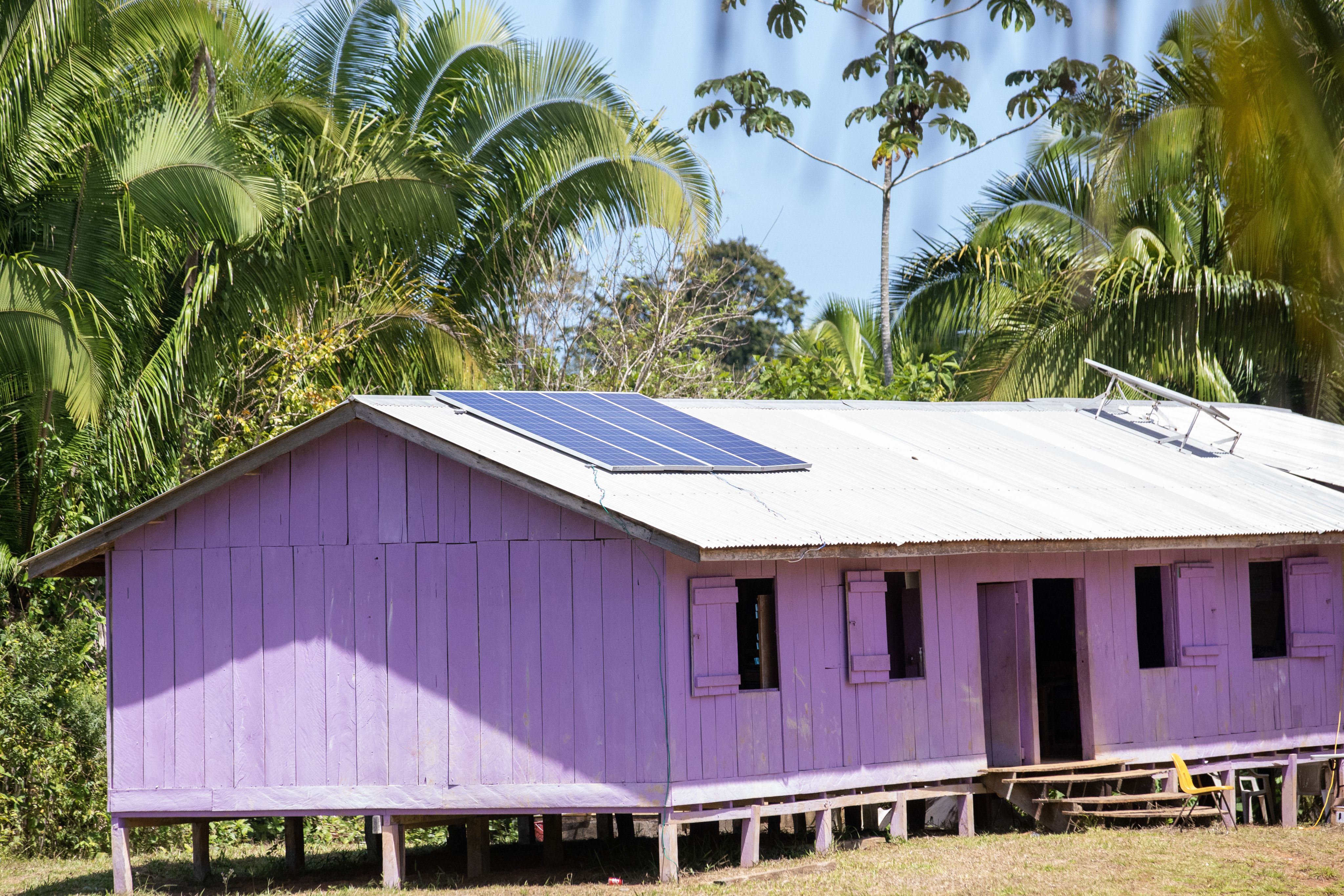
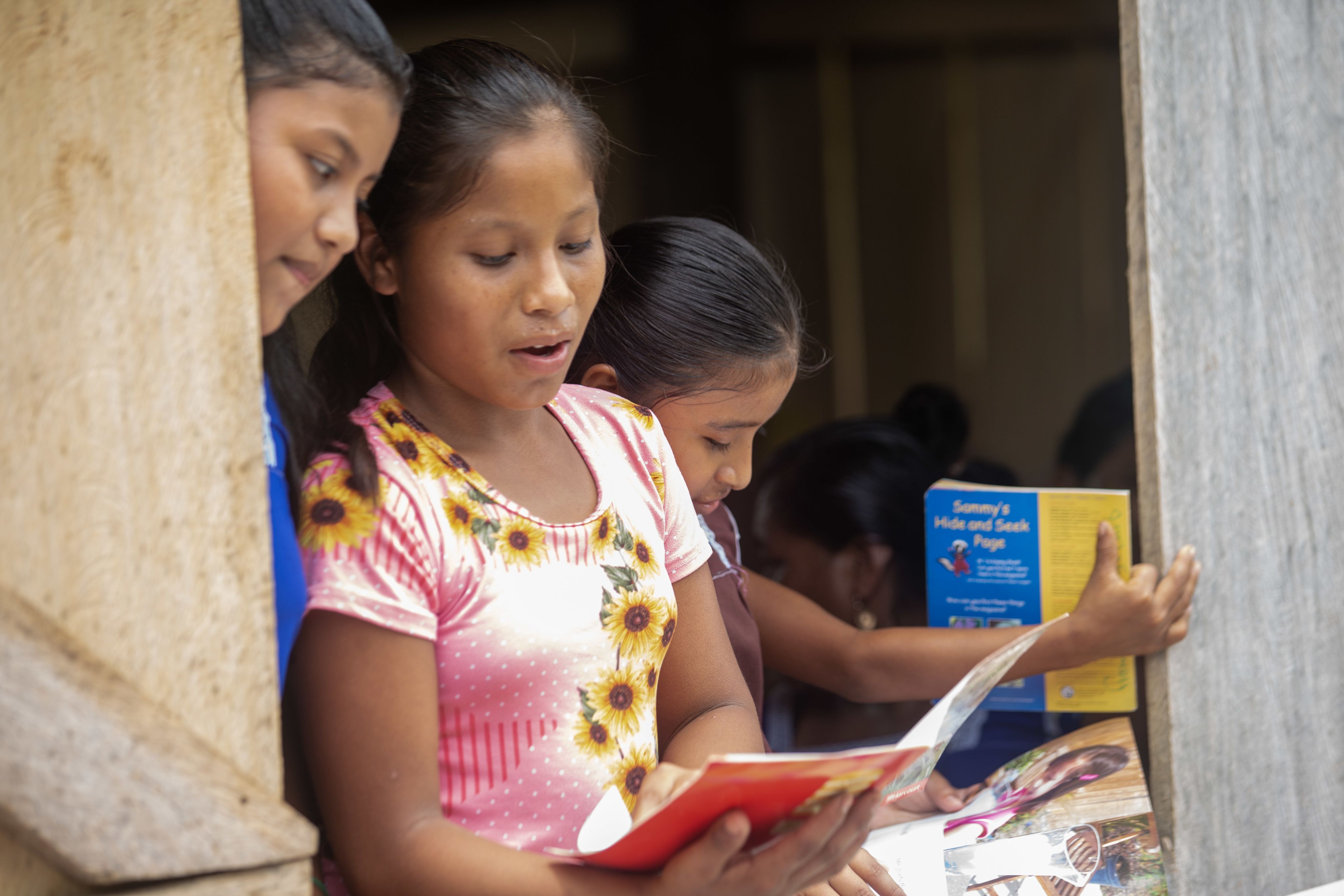
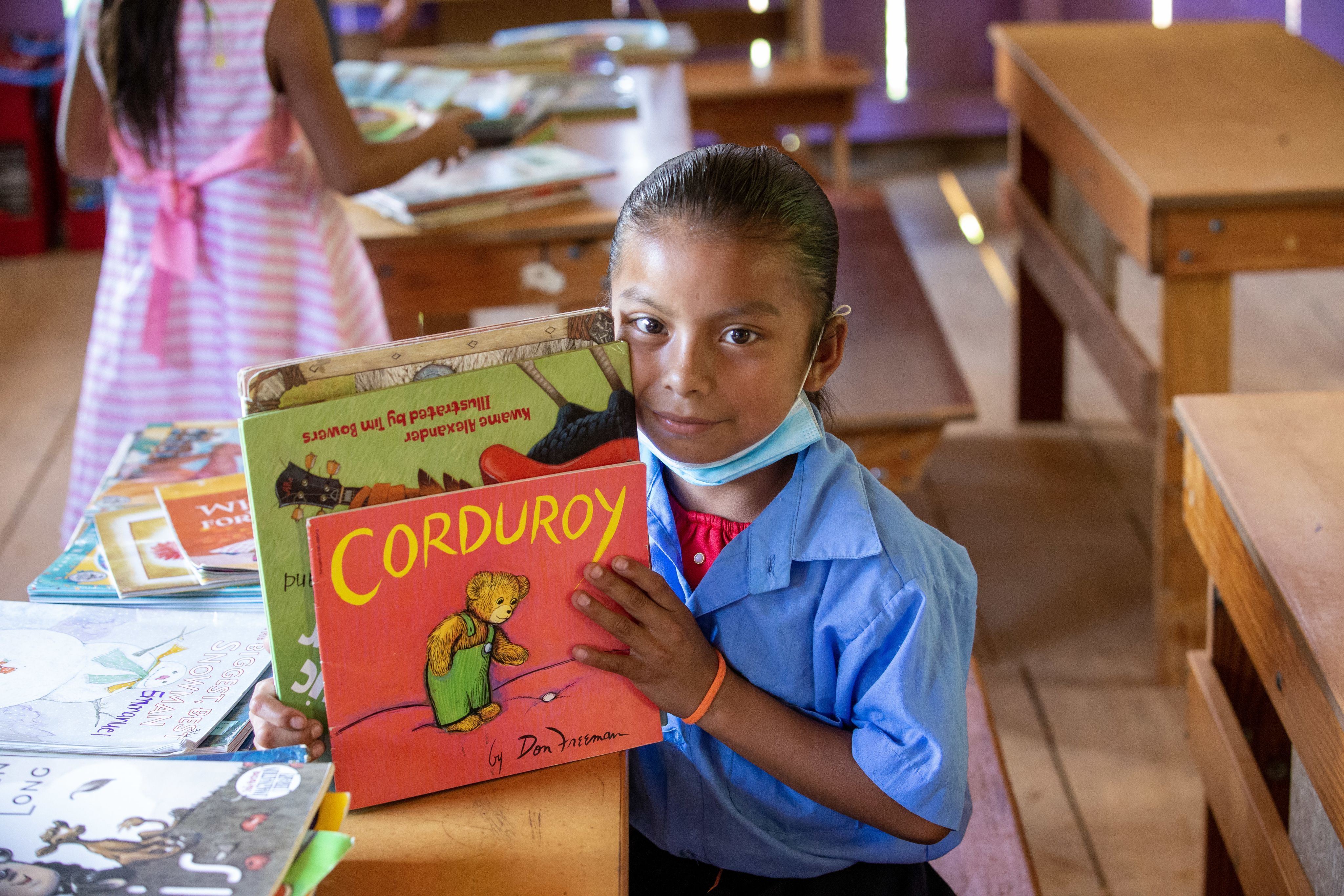

Machakil Ha inauguration in the Toledo District, Belize. Photo: Mark Miller/Plenty Belize-UNDP GEF SGP
Machakil Ha inauguration in the Toledo District, Belize. Photo: Mark Miller/Plenty Belize-UNDP GEF SGP


Local action, global impact
The Small Grants Programme (SGP) – a flagship initiative of the Global Environment Facility (GEF) implemented by the United Nations Development Programme (UNDP) – has been supporting the Solar Mamas programme since 2008 through a partnership with Barefoot College International, Women Light the World, Bodhi Tree Foundation Humla, the New Zealand High Commission and Mega Bank.
SGP has been providing financial and technical support to civil society and community-based initiatives that address global environmental issues while improving local livelihoods for over three decades.
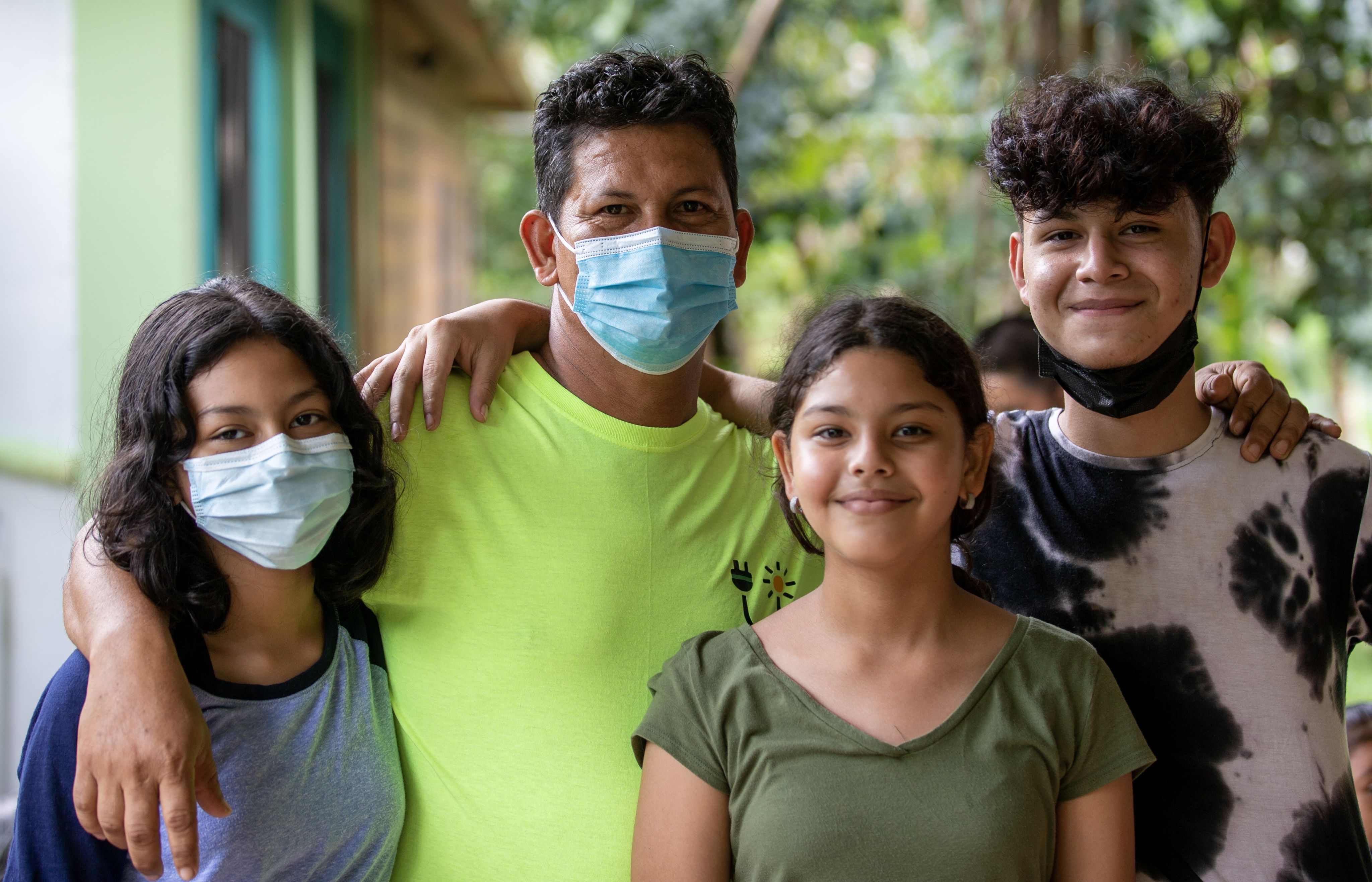
Solar graduation, December 2021. Photo: Mark Miller/Plenty Belize-UNDP GEF SGP
Plenty Belize is a grantee partner of SGP that focuses on using a community-based approach to promote sustainable development.
Contributing to the Sustainable Development Goals 5 (gender equality), 13 (climate action) and 15 (life on land), the partnership between the solar engineers and Plenty Belize will continue with support from SGP and Belize’s Ministry of Rural Transformation, Community Development, Labour, and Local Government.
The next villages to receive household solar systems are Punta Negra, Yalbac, Lucky Strike and San Lucas, home to 900 people.
In each community a Solar Power Board has been established to ensure long-term sustainability.
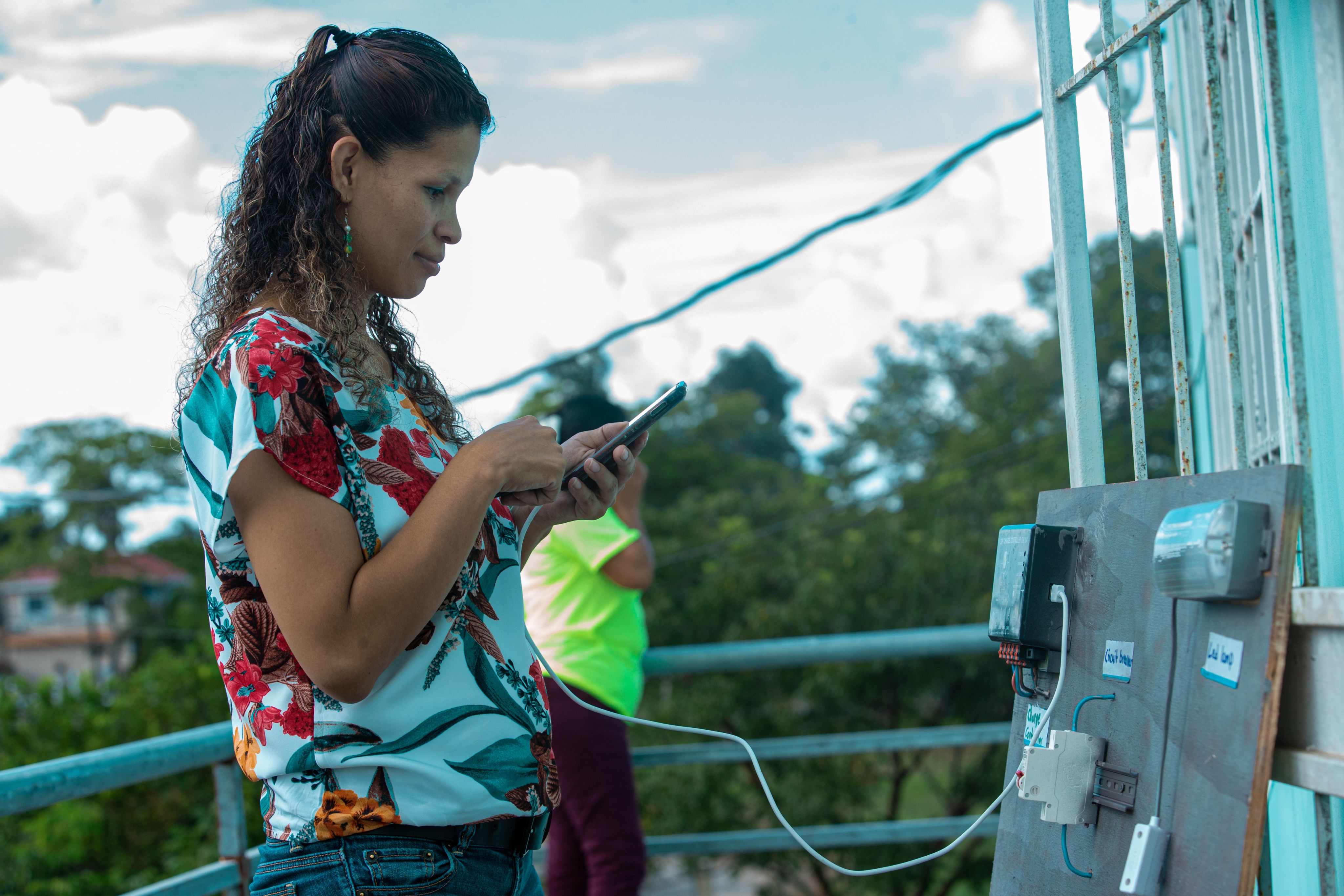
Elsa Cardinez, Coordinator, Ministry of Rural Transformation, Community Development, Labour, and Local Government charging her mobile phone after a practical photovoltaics training session facilitated by the solar engineers. Photo credit: Mark Miller/Plenty Belize-UNDP GEF SGP
In September 2023, another SGP grantee partner from Mexico, the Tuumben Kooben Cooperative, visited Plenty Belize to learn about their experience of bringing solar systems to rural, remote and Indigenous communities. This week, the two organizations are participating in a regional knowledge exchange meeting with solar technicians from Belize, Mexico and Guatemala.

Solar graduation, December 2021. Photo: Mark Miller/Plenty Belize-UNDP GEF SGP
Solar graduation, December 2021. Photo: Mark Miller/Plenty Belize-UNDP GEF SGP

Elsa Cardinez, Coordinator, Ministry of Rural Transformation, Community Development, Labour, and Local Government charging her mobile phone after a practical photovoltaics training session facilitated by the solar engineers. Photo credit: Mark Miller/Plenty Belize-UNDP GEF SGP
Elsa Cardinez, Coordinator, Ministry of Rural Transformation, Community Development, Labour, and Local Government charging her mobile phone after a practical photovoltaics training session facilitated by the solar engineers. Photo credit: Mark Miller/Plenty Belize-UNDP GEF SGP
Since 1993, SGP has supported 308 projects in Belize in the areas of biodiversity, land degradation, climate change, chemicals and waste, and international waters.
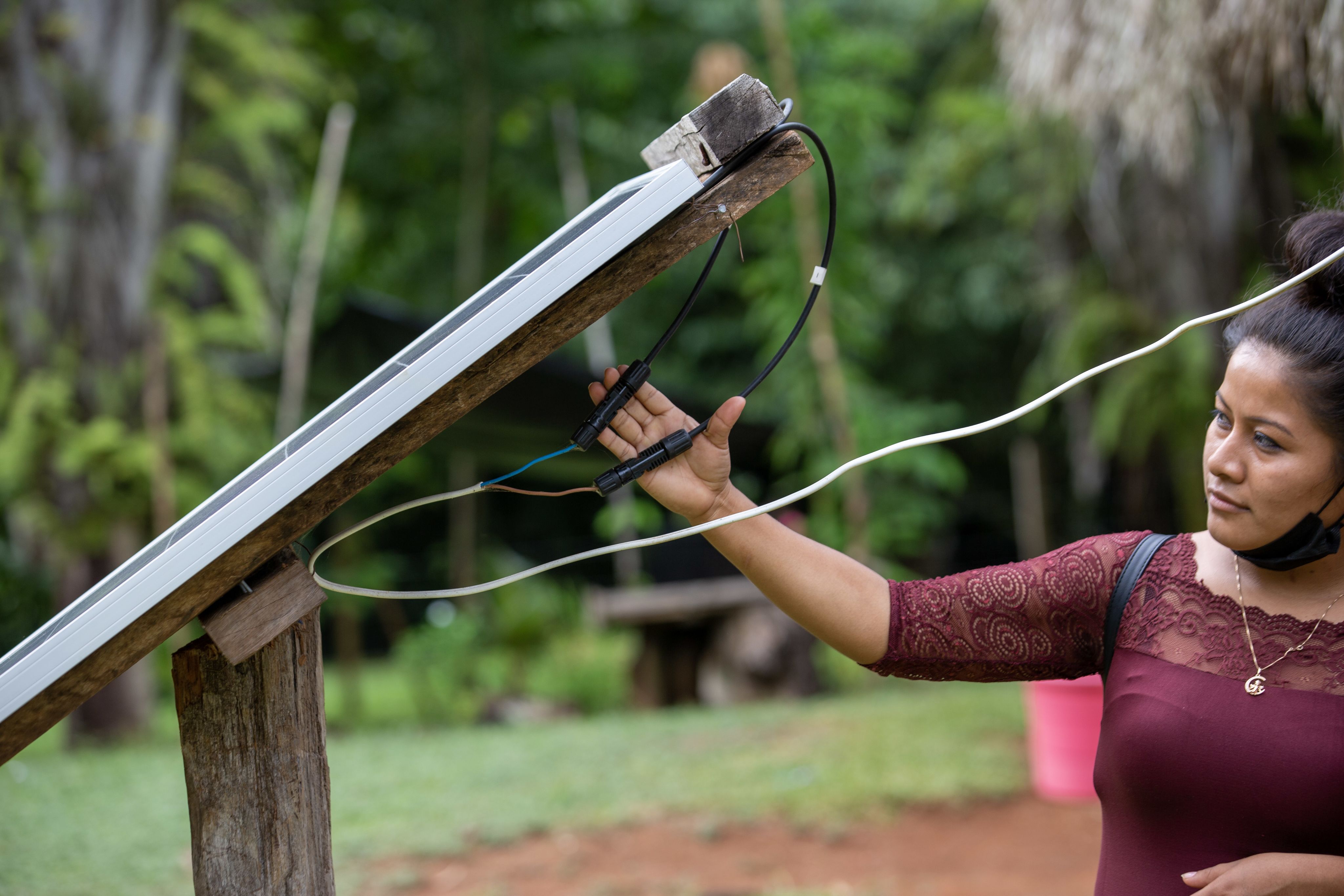
For more details on SGP’s work in the country, visit SGP’s Belize country page.
For information on SGP’s global portfolio, visit the global SGP website.

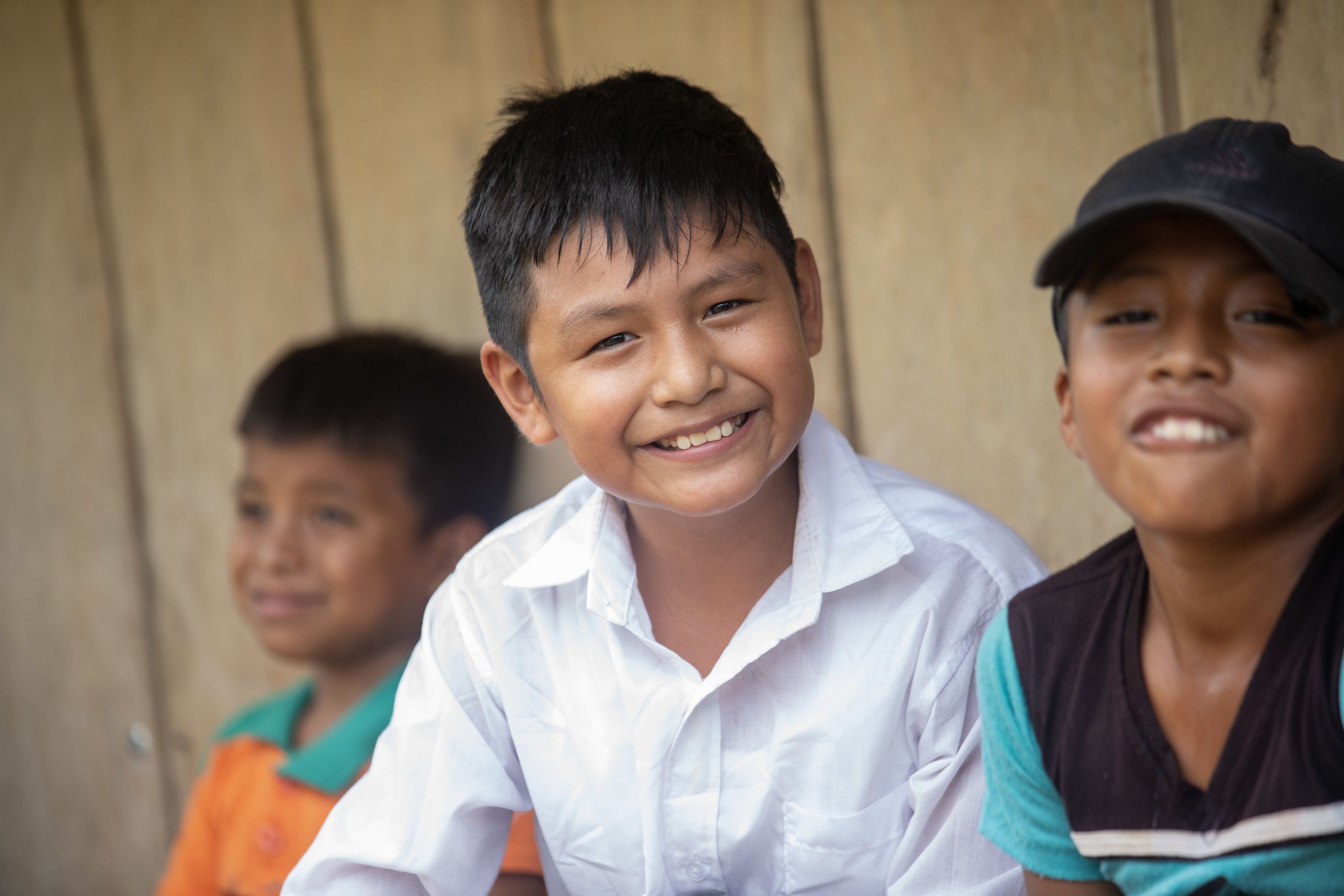
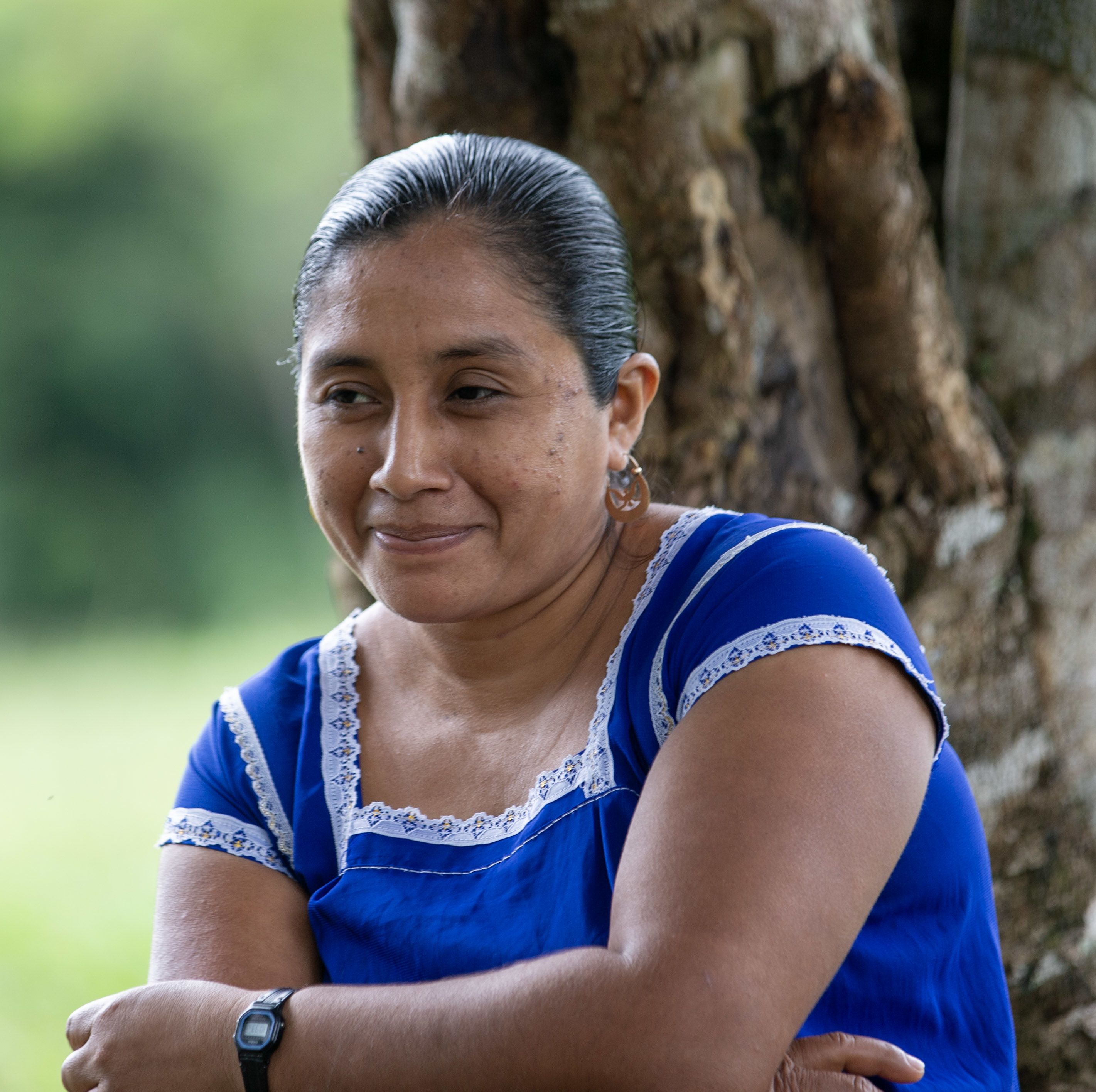
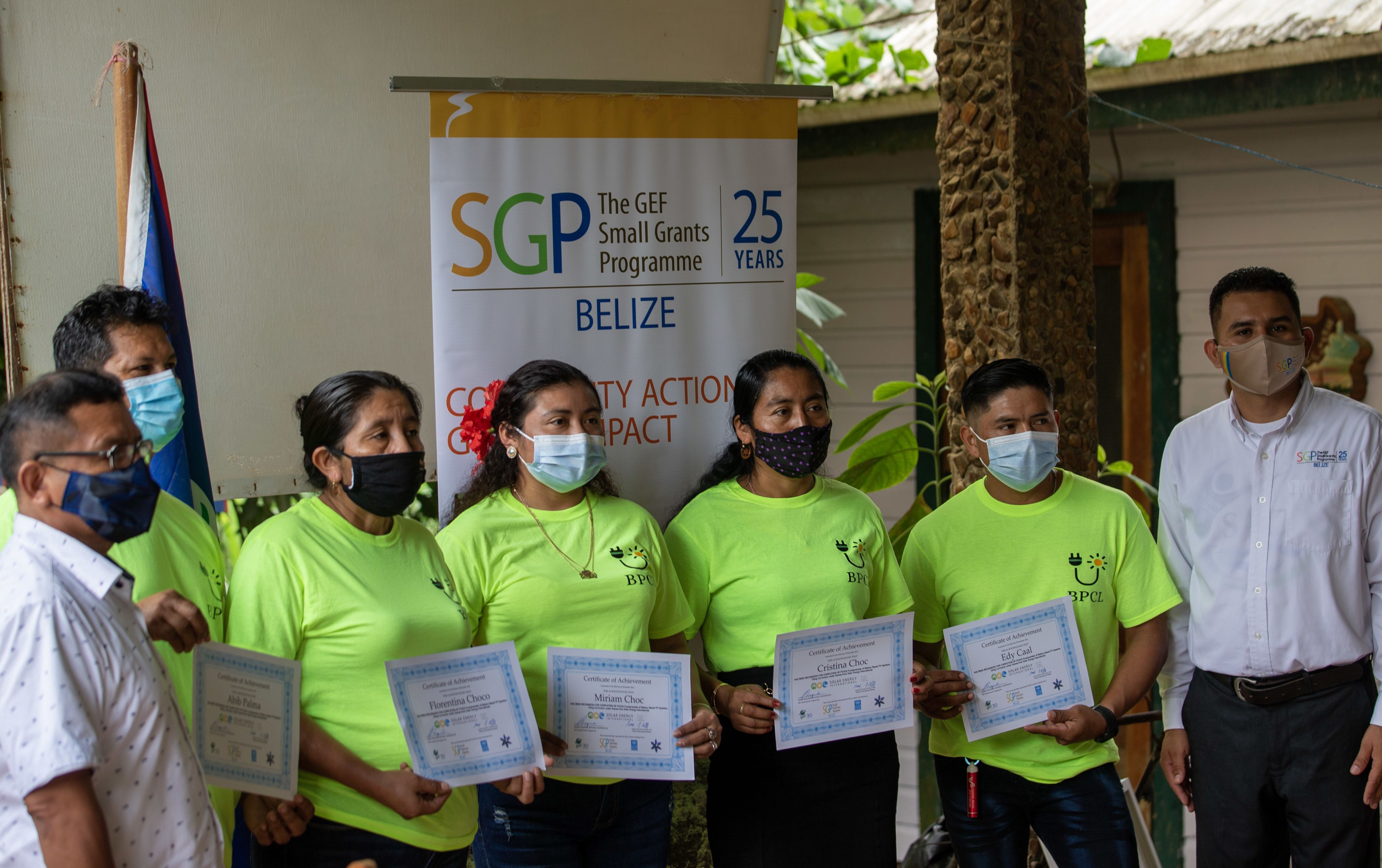




Story by Ana Canestrelli, Leonel Requena, Andrea Egan, Angelica Shamerina, and Rissa Edoo
Photos: © Courtesy of SGP Belize and Mark Miller/Plenty Belize-UNDP GEF SGP
Location: Toledo District, Belize
